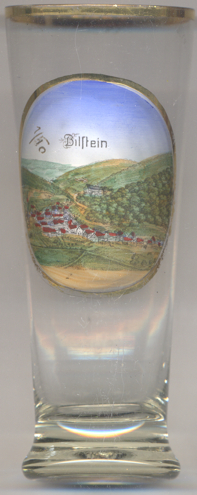

|
| DEUTSCHLAND | GERMANY |
| Bundesland: Nordrhein-Westfalen | North Rhine-Westphalia |
| Regierungsbezirk: Arnsberg | |
| Kreis: Olpe |
 Lennestadt is situated at an elevation of 280 m in the centre of the nature reserve Sauerland-Rothaargebirge
on the river Lenne in the Olpe district. The municipality was founded only in 1969 out of the former district (Amt)
Bilstein; it is actually not an actual town but is a community comprining several towns and villages (43 in total).
The municipality's population is about 25,800 (2016).
Lennestadt is situated at an elevation of 280 m in the centre of the nature reserve Sauerland-Rothaargebirge
on the river Lenne in the Olpe district. The municipality was founded only in 1969 out of the former district (Amt)
Bilstein; it is actually not an actual town but is a community comprining several towns and villages (43 in total).
The municipality's population is about 25,800 (2016).
The earliest traces of settlers in the current municipal area date to the Early Middle Ages. The centres of Elspe and Oedingen were first mentioned in a document in 1000 that Emperor Otto III had issued. This makes them the oldest places in Olpe district. Documents from the ensuing centuries mostly refer to Bilstein, Bilstein castle and Amt Bilstein. In 1445, Bilstein was conquered by the archbishop of Cologne who made it part of the duchy of Westphalia, which until 1802 was ruled by the archbishop Electors of Cologne. After the Peace of Lunéville (1802) and the 'Reichsdeputationshauptschluss (1803), Bilstein at first became part of Hesse-Darmstadt before passing to Prussia in 1817. At first it was centre of the district (Kreis) Bilstein before the districts administration was moved to Olpe in 1819. Within the district the Amt Bilstein was founded in 1843/1844, including the communities of Kirchveischede, Rahrbach, Förde (today Grevenbrück) and Elspe. On 30 June 1969 the Amt Bilstein was dissolved and refounded as the municipality of Lennestadt (a name that did not exist before). The seat of the municipality's administration at first provisionally was located in Grevenbrück, before in 1984 the new town hall in Altenhundem was opened.
 Bilstein castle [background centre]
is a spur castle on an extension of the nearby hill of Rosenberg overlooking Bilstein quarter of Lennestadt.
The appearance of the castle is thus dominated by its two round towers, each with a diameter of about eight metres:
the Chapel Tower in the northwest and the Hohnekamp Tower in the southeast. The towers are connected by a tunnel under
the castle courtyard. The castle was built in 1202–1225; the oldest document mentioning the castle dates from 1225.
In 1363 the castle came in possession of the Counts of Mark. When the archbishop of Cologne conquered the castle,
it became the seat of the administration of the district (Amt) Bilstein within the archbishop's duchy of Westphalia.
After the dissolution of the Electorate of Cologne in 1802 the area around the castle at first was allocated to the
Landgraviate Hesse-Kassel, before being becoming part of Prussia in 1816. Since 1927 it is
in use as a youth hostel (owned since 1979 by the German Youth Hostels Association).
Bilstein castle [background centre]
is a spur castle on an extension of the nearby hill of Rosenberg overlooking Bilstein quarter of Lennestadt.
The appearance of the castle is thus dominated by its two round towers, each with a diameter of about eight metres:
the Chapel Tower in the northwest and the Hohnekamp Tower in the southeast. The towers are connected by a tunnel under
the castle courtyard. The castle was built in 1202–1225; the oldest document mentioning the castle dates from 1225.
In 1363 the castle came in possession of the Counts of Mark. When the archbishop of Cologne conquered the castle,
it became the seat of the administration of the district (Amt) Bilstein within the archbishop's duchy of Westphalia.
After the dissolution of the Electorate of Cologne in 1802 the area around the castle at first was allocated to the
Landgraviate Hesse-Kassel, before being becoming part of Prussia in 1816. Since 1927 it is
in use as a youth hostel (owned since 1979 by the German Youth Hostels Association).
[https://de.wikipedia.org/wiki/Lennestadt, https://en.wikipedia.org/wiki/Lennestadt;
https://de.wikipedia.org/wiki/Burg_Bilstein_(Lennestadt), https://en.wikipedia.org/wiki/Bilstein_Castle_(Lennestadt)]
![[scale]](lineal.jpg)